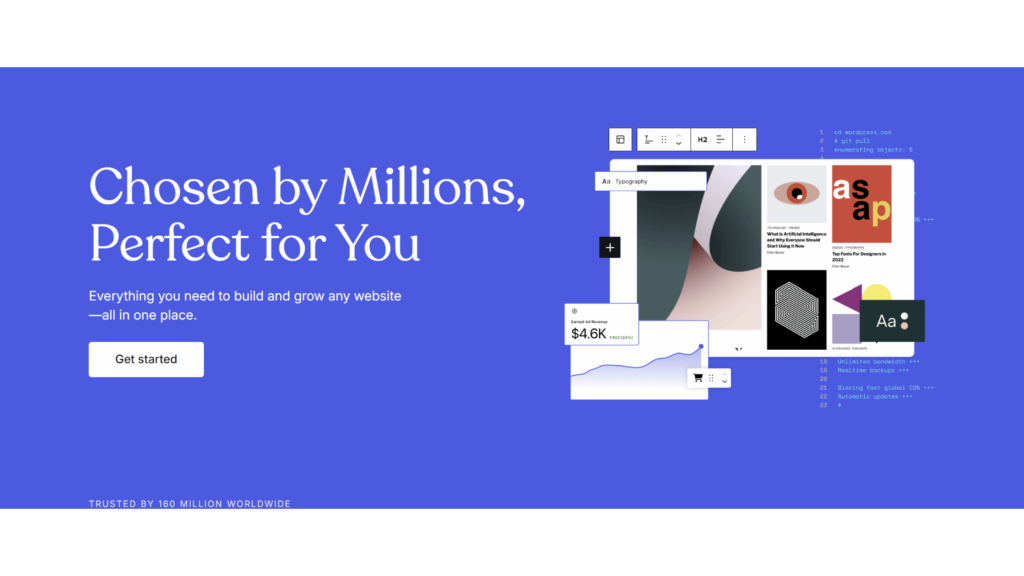
Ready to share your musical talent with the world and inspire the next generation of artists?
Launching an online music school could be your perfect encore. Imagine offering personalized lessons, interactive masterclasses, and a vibrant community to musicians from every corner of the globe. Your platform can become a beacon for budding talents eager to learn and grow.
From structuring engaging courses that cater to beginners and seasoned players alike, to using the latest technology for seamless online instruction, there’s a symphony of opportunities awaiting you. This guide will walk you through every step—from curriculum design and tech choices to marketing strategies and student engagement—so you can hit all the right notes in your new venture. Ready to make some beautiful music? Let’s get started!
TL;DR
- Choose the right platform: Decide between self-hosted platforms (WordPress, Kajabi) vs. existing education platforms (Teachable, Udemy).
- Create structured lessons: Develop a curriculum with clear goals and engaging content for different skill levels.
- Leverage technology: Use tools like Zoom, GarageBand, or Soundtrap for interactive learning and feedback.
- Monetize your school: Offer tiered pricing, memberships, and affiliate programs to create multiple income streams.
- Market strategically: Use social media, YouTube, and email marketing to grow your audience.
Choosing the Right Platform
The first step in creating an online music school is choosing the right platform. There are generally two paths: building your own website using platforms like WordPress or Kajabi, or using existing online learning platforms like Teachable, Udemy, or Skillshare.
Self-Hosted Platforms
If you’re looking for full control over your content, branding, and pricing, self-hosted platforms like WordPress (using plugins like LearnDash or MemberPress) or Kajabi allow you to design a custom experience. With these platforms, you control your website and have the freedom to create unique membership tiers, offer exclusive content, and build your own community of students.
Tools You Can Use:
- LearnDash: A popular WordPress plugin for creating online courses.
- Kajabi: All-in-one platform for course creation, email marketing, and community building.
If you’re interested in a real-world example of growing an online presence, check out this video on how the creators got their first 100 subscribers on YouTube: How We Got Our First 100 Subscribers on YouTube. This can provide valuable insights into building an audience and promoting your online school.
For More Free Videos, Subscribe to the Rhodes Brothers YouTube Channel.
Pre-Existing Course Platforms
If you’re more focused on getting your content out quickly and don’t want to deal with the tech side of things, platforms like Teachable, Udemy, or Skillshare are excellent options. These platforms handle all the technical aspects for you, including hosting, payments, and student management.
Tools You Can Use:
- Teachable: Easy-to-use platform for creating and monetizing online courses.
- Udemy: A huge marketplace where your course can reach millions of potential students.
- Skillshare: More community-driven, focusing on creative courses with a subscription model.
Creating Structured and Engaging Lessons
Creating an engaging curriculum is key to the success of your online music school. Your courses should cater to musicians at different skill levels, from complete beginners to advanced students looking to hone their craft. A well-structured curriculum will guide students on a learning journey that has clear goals.
Step 1: Define Learning Outcomes
Start by defining what your students will accomplish by the end of each course. For example, a beginner guitar course might have the goal of teaching students to play five basic chords, while an advanced course might focus on mastering improvisation in jazz.
Step 2: Break Down Lessons into Bite-Sized Chunks
When teaching online, it’s important to break lessons down into small, digestible parts. This helps students stay engaged and not feel overwhelmed. For example, rather than teaching “Music Theory,” break it down into smaller sections like “Intervals,” “Chords,” and “Scales.”
Step 3: Use Interactive Tools
Incorporate interactive tools to make learning more hands-on. Tools like Soundtrap or GarageBand let students practice creating music in real-time, while platforms like Zoom allow for live lessons and immediate feedback.
Tools You Can Use:
- Soundtrap: An online studio where students can create music collaboratively.
- Zoom: For live lessons, masterclasses, and Q&A sessions.
- GarageBand: A free digital audio workstation for Mac users, ideal for beginner recording and music production lessons.
Monetizing Your Online Music School
Once you’ve built your platform and created your lessons, it’s time to think about how to monetize your online music school effectively. There are several ways to generate revenue from your courses, and ideally, you’ll want to implement a combination of these strategies.
Offer Tiered Pricing
One of the most effective ways to maximize revenue is by offering tiered pricing. For example, you can have a basic membership that gives students access to pre-recorded lessons, a premium membership that includes live lessons or feedback on their performances, and a VIP membership that offers one-on-one coaching.
Create a Membership Model
A membership model allows students to pay a monthly or yearly fee to access all your courses. This provides a steady income stream and encourages students to stay engaged and continue learning.
Affiliate Marketing and Sponsorships
If you have a large audience, consider affiliate marketing and sponsorships. For example, you can partner with companies that sell musical instruments or recording equipment and recommend their products to your students in exchange for a commission. Just be sure to only recommend products you genuinely believe in.
Tools You Can Use:
- Patreon: Great for musicians looking to offer exclusive content to their supporters.
- Affiliate Programs: Amazon Associates, Sweetwater, or other music-related affiliate programs.
Marketing Your Online Music School
Once you’ve built your music school, you need to get the word out. Here are some of the most effective ways to market your online music school.
Use YouTube
YouTube is a powerful platform for reaching aspiring musicians. You can create free content that gives potential students a taste of what your lessons are like. For example, you might post tutorials, practice tips, or music theory lessons, and then encourage viewers to sign up for your full course.
Tip: Check out the Rhodes Brothers YouTube Channel for inspiration on how to create engaging music content that resonates with viewers.
Leverage Social Media
Platforms like Instagram, TikTok, and Facebook are great for building a community of like-minded musicians. Share snippets of your lessons, tips for aspiring musicians, and testimonials from satisfied students to build credibility.
Build an Email List
An email list allows you to stay in touch with potential students and keep them informed about new courses, special offers, and updates. Use lead magnets like free e-books or sample lessons to encourage visitors to sign up for your list.
Tools You Can Use:
- Mailchimp: For email marketing and creating automated campaigns.
- Canva: To create eye-catching social media posts and promotional materials.
Actionable Steps for Creating an Online Music School for Aspiring Musicians
Building a successful online music school requires a well-planned approach that caters to different demographics and experience levels. Below are practical, step-by-step strategies to guide you through the process, whether you’re targeting beginners, intermediate musicians, or advanced players.
Define Your Target Audience
Before you start building your courses, it’s essential to know who you are teaching. Your audience will directly influence the structure, content, and marketing of your online music school.
Steps:
- Identify skill levels: Are you teaching beginners, intermediate players, or advanced musicians? Each group has different needs and expectations.
- Pinpoint specific interests: Are your students interested in learning a particular instrument (e.g., guitar, piano), music theory, or music production?
- Determine demographics: Consider age groups, such as children, teenagers, or adults. Each demographic may require different teaching methods and communication styles.
Example:
- Beginners may need more foundational lessons (e.g., understanding basic chords or reading sheet music).
- Advanced musicians may focus on niche topics like jazz improvisation, complex music theory, or mastering a specific style.
Choose the Right Platform

The platform you select will significantly impact how you create, deliver, and monetize your courses. Choose between a self-hosted platform (like WordPress with LearnDash or Kajabi) or pre-existing platforms (like Teachable or Udemy) based on your needs.
Steps:
- Evaluate your technical skills: If you prefer full control and customization, a self-hosted platform might be better. If you want a faster setup, pre-existing platforms can get you started quickly.
- Consider your budget: Self-hosted platforms often have higher upfront costs (e.g., hosting, domain, plugins), while pre-existing platforms may take a percentage of your earnings.
- Assess your long-term goals: Do you want to build a standalone brand with full ownership of your content, or are you focused on quickly reaching a large audience?
Develop a Structured Curriculum
Creating a well-organized curriculum is crucial for keeping students engaged and helping them progress through different skill levels. Your curriculum should cater to the varying needs of your students based on their experience level.
Steps:
- Start with learning outcomes: Define what students should achieve by the end of each course or lesson. For example, a beginner guitar course might aim to teach students how to play basic chords, while an advanced course might focus on solo techniques.
- Break lessons into small chunks: Avoid overwhelming students by dividing content into bite-sized lessons. For example, instead of teaching “Music Theory” in one go, break it down into smaller topics like “Intervals,” “Chords,” and “Scales.”
- Incorporate practice exercises: Provide downloadable sheet music, practice tracks, or assignments to reinforce lessons.
Example:
- Beginners: Create a 10-week course teaching the basics of an instrument, with each week focusing on a specific technique or skill.
- Intermediate/Advanced: Offer specialized workshops, such as “Improvisation in Jazz” or “Advanced Fingerpicking for Guitar.”
Use Interactive Tools to Enhance Learning
Interactive elements are key to keeping students engaged, especially in an online learning environment. Use tools that make learning more hands-on and collaborative.
Steps:
- Use live video platforms: For real-time lessons, feedback, or Q&A sessions, tools like Zoom are essential.
- Encourage collaboration: Tools like Soundtrap allow students to create and share music online in real time, fostering a collaborative learning environment.
- Incorporate music production tools: For production-based lessons, software like GarageBand (for beginners) or Ableton Live (for advanced students) can be used to teach composition and recording.
Example:
- Beginners: Use Zoom to offer live group classes, where students can ask questions and receive real-time feedback.
- Advanced: Incorporate software like Logic Pro or Ableton to teach advanced production techniques, such as mixing and mastering.
Create Multiple Pricing Models
Your target audience may have different budgetary constraints, so offering flexible pricing models will help you attract a broader range of students.
Steps:
- Offer tiered pricing: Create different membership levels, such as a free tier with basic lessons, a mid-tier with access to more in-depth courses, and a VIP tier with one-on-one coaching.
- Consider a subscription model: Allow students to pay a monthly or yearly fee for access to all your courses. This also provides a consistent revenue stream.
- Bundle courses: Offer discounted bundles where students can purchase multiple courses together.
Example:
- Beginners: Offer a low-cost “starter” package with introductory lessons and practice assignments.
- Advanced: Provide a premium option with one-on-one coaching, feedback on assignments, and personalized lesson plans.
Build an Online Community
Fostering a community around your online music school will help build loyalty and engagement. Students who feel connected to both their peers and the instructor are more likely to stay enrolled.
Steps:
- Create a community forum: Use platforms like Slack, Discord, or Facebook Groups to create a space where students can interact, ask questions, and share their progress.
- Host live events: Offer live Q&A sessions, webinars, or even virtual concerts where students can showcase their skills.
- Offer peer feedback: Encourage students to share their work and give feedback on each other’s progress.
Example:
- Beginners: Host group practice sessions or beginner-friendly “recitals” where students can perform for each other.
- Advanced: Create a mastermind group where advanced students can collaborate on projects and share higher-level tips and strategies.
Monetize Your Music School
There are various ways to monetize your online music school, and you should ideally combine several approaches to maximize revenue.
Steps:
- Sell individual courses: Offer one-time purchases for standalone courses, which is great for students who prefer to learn at their own pace.
- Create a membership model: Charge a monthly or yearly subscription for access to all your courses and resources.
- Offer one-on-one coaching: For a higher price, provide personalized coaching sessions via video calls.
- Affiliate marketing: Partner with musical instrument companies or software providers to earn commissions when your students purchase recommended products.
- Crowdfunding platforms: Use platforms like Patreon to offer exclusive content to your most loyal students.
Example:
- Beginners: Offer a free introductory course to attract new students, then up-sell to more advanced paid courses.
- Advanced: Provide exclusive one-on-one lessons or masterclasses for higher-paying students.
Market Your Online Music School
Once you’ve developed your courses, it’s time to market your school. Effective marketing will help you stand out from competitors and attract a steady stream of students.
Steps:
- Leverage YouTube: Post free content such as tutorials, practice tips, and music performances to give potential students a taste of what you offer. Include links to your paid courses in the video descriptions.
- Use social media: Platforms like Instagram, TikTok, and Facebook are great for promoting your courses. Post short clips from your lessons, student testimonials, or behind-the-scenes content.
- Build an email list: Use lead magnets, such as free e-books or sample lessons, to encourage visitors to sign up for your email list. Send regular newsletters to keep your audience engaged and informed about new courses or special offers.
- Run paid ads: Consider using Facebook or Google Ads to target your ideal students directly based on demographics, interests, or keywords.
Example:
- Beginners: Post short, beginner-friendly tutorial videos on TikTok or Instagram to drive traffic to your paid courses.
- Advanced: Use YouTube to share in-depth masterclass previews, then funnel viewers into purchasing the full course.
Common Mistakes to Avoid When Building an Online Music School
Creating an online music school is an exciting endeavor, but there are several common pitfalls that can hinder your success. By being aware of these issues, you can avoid them and set your music school up for long-term growth. Below, we’ll dive deeper into these mistakes and offer actionable strategies to overcome them.
Overcomplicating the Curriculum
The Mistake:
- It’s easy to get carried away with creating an in-depth, highly technical curriculum, especially if you’re passionate about the subject. However, this can overwhelm students—particularly beginners—and leave them feeling frustrated or demotivated.
Why It Happens:
- You want to offer everything you know upfront, thinking that more content equals more value.
- You assume students will follow along at your pace, even if the material is dense.
How to Avoid It:
- Start simple: Break down complex topics into manageable lessons. For example, instead of diving into advanced music theory, start with the basics—like learning major and minor scales—before moving on to chord progressions or harmonic analysis.
- Teach progressively: Organize lessons in a way that builds upon previous concepts. For example, if you’re teaching guitar, start with basic chords and strumming patterns before moving on to fingerpicking or improvisation.
- Use plain language: Avoid jargon and technical terms unless you’ve clearly explained them. Assume that your students are completely new to the topic, and guide them through it.
Actionable Tip:
- Test your curriculum with a small group of students (beta testers). See how they respond to the lessons, and adjust the content based on their understanding and feedback.
Neglecting Marketing
The Mistake:
- You’ve put all your effort into creating a great course, but no one knows it exists. Many creators focus so much on the content that they forget about the importance of marketing. Without a solid marketing strategy, even the best courses will fail to reach their potential audience.
Why It Happens:
- Underestimation of how much time and effort marketing requires.
- The false belief that “great content markets itself.”
How to Avoid It:
- Start early: Begin building your audience before your course is even finished. Share behind-the-scenes progress, offer sneak peeks, or ask for feedback on social media.
- Leverage free content: Use platforms like YouTube, Instagram, or TikTok to create free, valuable content that draws potential students into your ecosystem. For example, post short tutorials, tips, or practice exercises.
- Use email marketing: Build an email list from day one. Offer a free downloadable resource (e.g., a beginner’s guide to playing piano) in exchange for email sign-ups. Use this list to promote new courses, share updates, and offer discounts.
- Run ads: If you have the budget, use targeted ads on platforms like Facebook, Instagram, or Google to reach potential students. Focus on specific demographics (e.g., beginner guitarists aged 18-25) to maximize ROI.
Actionable Tip:
- Create a content calendar for your marketing strategy. Plan out regular blog posts, social media updates, and email newsletters to maintain consistent engagement with your audience.
Ignoring Student Feedback
The Mistake:
- Not listening to your students or failing to adjust your content based on their experiences can lead to dissatisfaction, lower retention rates, and negative reviews. Ignoring feedback can also prevent your courses from evolving and improving over time.
Why It Happens:
- You believe you know best because you’re the expert, and you assume your teaching method is the most effective.
- Fear of criticism, which can make it easier to dismiss or overlook feedback.
How to Avoid It:
- Encourage feedback from day one: At the end of each lesson or module, ask your students for input on what worked and what didn’t. Use surveys, polls, or forums to collect their thoughts.
- Be flexible: If multiple students are struggling with the same concept or lesson, be willing to rework it. Adjust your content, create supplemental materials, or explain the concept in a different way.
- Follow up on feedback: Respond to students who provide feedback, acknowledging their suggestions and letting them know how you plan to improve. This builds trust and shows that you value their input.
Example:
- If students are consistently saying they’re confused about a particular music theory concept, create an additional video or resource that explains it in simpler terms or provides more examples.
Actionable Tip:
- Create a feedback loop: After each course or module, send an automated email asking students to rate their experience. Use tools like Google Forms or Typeform to gather detailed feedback, and make improvements based on their responses.
Pricing Your Courses Incorrectly
The Mistake:
- Setting the wrong price—whether too high or too low—can scare away potential students or devalue your content. Charging too little may make people question the quality of your lessons, while charging too much could price out your target audience.
Why It Happens:
- Lack of market research into what other music educators are charging.
- Fear that pricing too high will deter students or that pricing too low will devalue the course.
How to Avoid It:
- Research the competition: Look at what other music schools or online educators are charging for similar content. This will give you a baseline for setting your price.
- Offer tiered pricing: Provide different pricing options to appeal to a wider range of students. For example, offer a basic version of your course at a lower price and a premium version with additional features (e.g., one-on-one coaching, extra resources).
- Use discounts strategically: Offer limited-time discounts or early-bird pricing to create urgency and encourage sign-ups. However, avoid consistently marking down your courses, as it could devalue your content over time.
Actionable Tip:
- Test different pricing models: Consider offering a free introductory course to attract students, then up-sell them to more advanced (paid) material. Alternatively, experiment with a subscription model where students pay monthly for access to all your content.
Not Providing Enough Value in Free Content
The Mistake:
- Some instructors are hesitant to give away too much for free, fearing it will reduce the incentive for students to purchase their paid courses. However, without providing enough value upfront, potential students may never trust you enough to invest in your paid content.
Why It Happens:
- Fear of giving away too much for free, which could undercut paid offerings.
- Misunderstanding how free content can act as a powerful marketing tool.
How to Avoid It:
- Provide real value in your free content: Don’t be afraid to share high-quality material in your free tutorials, blog posts, or YouTube videos. This builds trust and demonstrates your expertise.
- Use free content to introduce paid courses: Offer free lessons that solve a small, specific problem, and use them to lead into your paid courses, which provide more in-depth solutions.
- Offer lead magnets: Create valuable free resources—such as cheat sheets, practice guides, or a sample lesson— in exchange for email sign-ups. This can help build your email list and give potential students a taste of what you offer.
- Actionable Tip:
- Repurpose free content: Create short, free tutorials on YouTube or Instagram that give potential students a glimpse into your teaching style. These platforms are great for building an audience and funneling them into your paid courses.
Poor Student Engagement and Retention
The Mistake:
- Even if you’ve successfully enrolled students, failing to engage them throughout the course can lead to high dropout rates. If students aren’t motivated or connected to the material, they may lose interest and stop progressing.
Why It Happens:
- One-size-fits-all approach to teaching, where you assume all students learn the same way.
- Lack of ongoing interaction or personalized feedback.
How to Avoid It:
- Use interactive tools: Incorporate quizzes, assignments, or collaborative projects to keep students engaged. Tools like Soundtrap (for music creation) or Zoom (for live sessions) can add a hands-on element.
- Offer regular feedback: Provide personalized feedback on student assignments or progress. This can be as simple as sending video critiques or offering additional resources if a student is struggling.
- Create a community: Use platforms like Slack or Facebook Groups to build a student community where learners can share their progress, ask questions, and collaborate with peers. This helps students feel connected and motivated.
Actionable Tip:
- Track student progress: Use tools like Google Classroom or Teachable to monitor student completion rates and engagement. If you notice students are dropping off after certain lessons, revisit the content to see how it can be improved or made more engaging.
Frequently Asked Questions
How much does it cost to start?
Platforms like Teachable start at $39/month. Custom sites may cost more.
Can I teach multiple instruments?
Yes, but ensure each course is structured and taught by experts.
How do I structure lessons?
Define learning outcomes, break content into small chunks, and use interactive tools.
How to price my courses?
Beginner courses can be priced lower, advanced or one-on-one lessons can be higher.
Can I offer live lessons?
Yes, platforms like Zoom are perfect for live lessons and student interaction.
How do I market my courses?
Use YouTube, social media, and email marketing to grow your audience.
What tools do I need?
Teachable, Zoom, GarageBand, and Mailchimp are all useful tools to get started.
How long should each lesson be?
Aim for 10-15 minute lessons that are focused and engaging.
Do I need to be a professional musician to teach?
No, but having a strong background in music and teaching skills is essential.
How do I get students to enroll?
Offer free content, engage on social media, and use email marketing to nurture leads.
Your Musical Journey Starts Here
Creating an online music school for aspiring musicians is more than just a business venture – it’s a way to inspire and teach future generations how to express themselves through music. Whether you’re offering lessons on guitar, piano, or music theory, your online school has the potential to reach students from across the globe who share the same passion for music.
Now that you’ve got the blueprint, it’s time to take action. Start today by defining your course objectives, choosing your platform, and crafting engaging lessons. The world of aspiring musicians is out there waiting for you to help them unlock their potential.
Ready to get started? Subscribe to the Rhodes Brothers YouTube Channel for the latest tips, tutorials, and motivational content to help you build a successful online music school and inspire the next generation of musicians.
Resource List
To help you on your journey, here’s an exhaustive list of resources to deepen your understanding and make your online music school a success:
Books
- The Musician’s Way: A Guide to Practice, Performance, and Wellness by Gerald Klickstein
- Teach Like a Champion by Doug Lemov – This book offers invaluable teaching strategies that can be applied to online music education.
- Becoming a Music Teacher: From Student to Practitioner by Donald L. Hamann – A great resource for understanding the pedagogy behind music education.
Podcasts
- The Modern Musician Podcast – Offers tips on building a career in music and teaching online.
- The Music Creative Podcast – Insights on creativity, teaching, and building an online presence as a musician.
Courses
- Music Theory Comprehensive (Udemy): A full course on music theory for beginners and intermediate students.
- Master the Piano (Teachable): A step-by-step piano course for educators or aspiring musicians.
Tools and Apps
- Soundtrap: An online collaborative music studio that allows students to create and share projects.
- GarageBand: A free digital audio workstation for Mac users, perfect for teaching music production.
- Zoom: The go-to tool for live lessons and student interaction.
- Teachable: A user-friendly platform to host and sell your online music courses.
- Kajabi: A powerful all-in-one platform for course creation, email marketing, and membership.
- Mailchimp: For building and managing your email list and sending professional newsletters.
Websites and Blogs
- Rhodes Brothers Blog: Dedicated to music education and entrepreneurship.
- Musician’s Way Blog: Offers practical advice on music practice and performance.
- Creative Music Education: Focused on providing innovative and fun ideas for teaching music online.
Keyword Cheat Sheet
- Creating an Online Music School for Aspiring Musicians
- How to Start an Online Music School
- Monetizing Online Music Lessons
- Best Platforms for Teaching Music Online
- Online Music School Curriculum Development
- Interactive Tools for Teaching Music
- Marketing Your Online Music School
- Common Mistakes When Starting an Online Music School
- Music Education for Beginners
- Affiliate Marketing for Music Teachers




